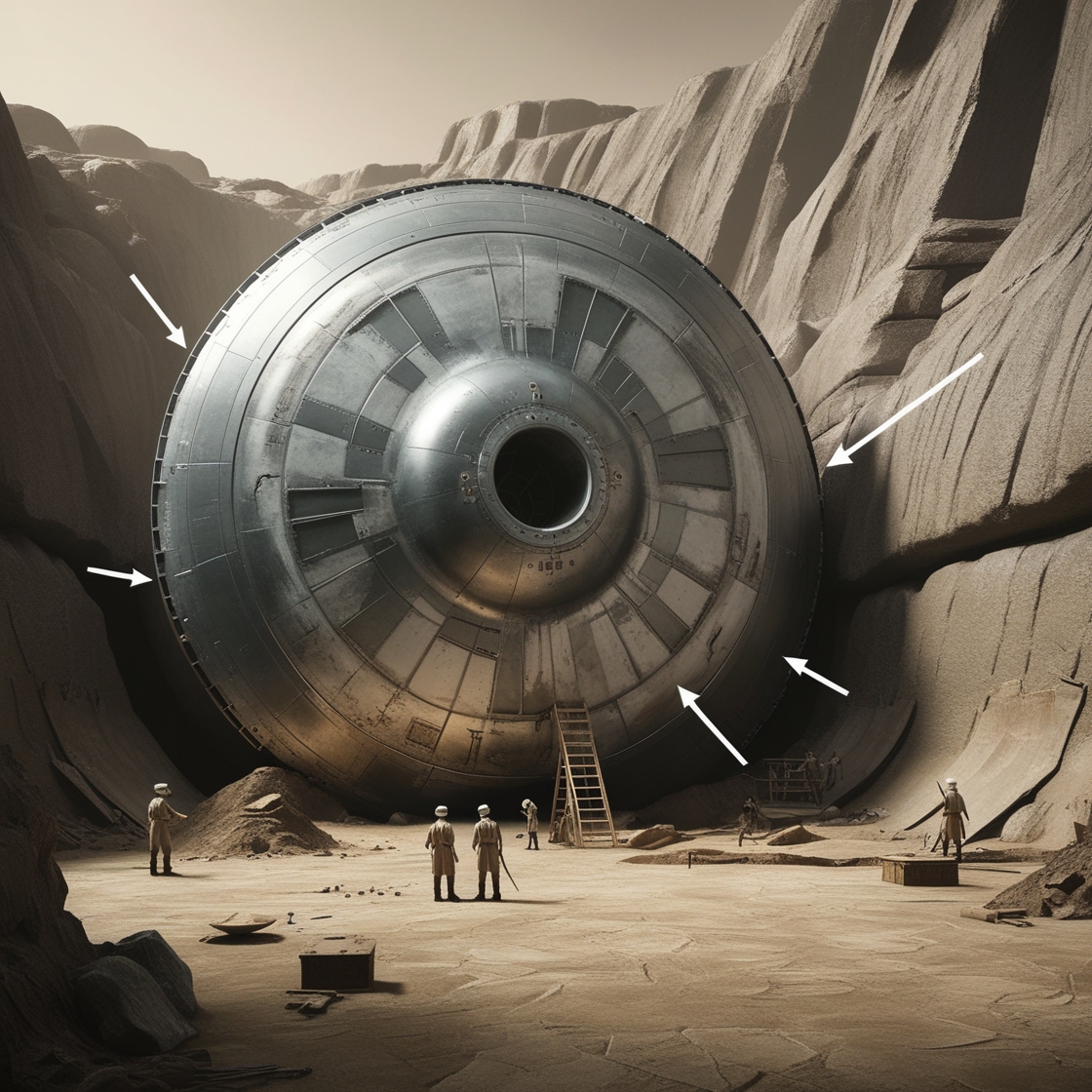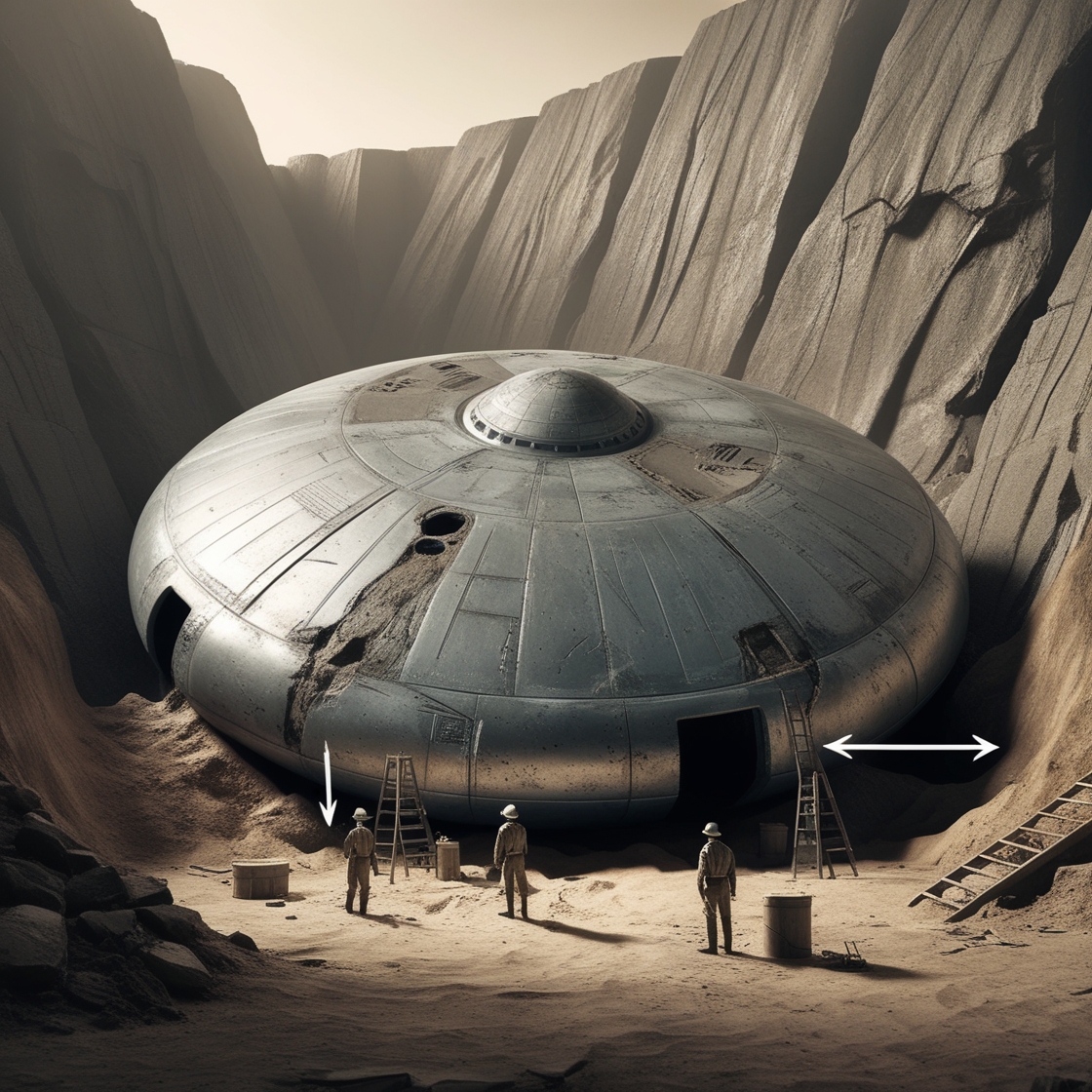
Ancient Mystery Uncovered in Egypt’s Remote Desert
 In an astonishing archaeological breakthrough, researchers have uncovered a massive, disc-shaped structure buried deep in Egypt's remote desert. This mysterious find has sent ripples of excitement and curiosity through the scientific community and the public alike. The site, hidden beneath layers of sand and rock, has the appearance of an ancient, unidentified structure—one that many are likening to a "UFO" due to its disc-like shape and otherworldly characteristics.
In an astonishing archaeological breakthrough, researchers have uncovered a massive, disc-shaped structure buried deep in Egypt's remote desert. This mysterious find has sent ripples of excitement and curiosity through the scientific community and the public alike. The site, hidden beneath layers of sand and rock, has the appearance of an ancient, unidentified structure—one that many are likening to a "UFO" due to its disc-like shape and otherworldly characteristics.
The Discovery
The structure was unearthed as part of an exploratory dig initiated by a team of archaeologists and historians studying ancient Egyptian sites off the beaten path. Preliminary findings suggest the object is metallic, with intricate engravings, panel-like designs, and structural features unlike anything previously documented in Egyptian history. The exact dimensions of the structure are still being measured, but early estimates indicate that it spans tens of meters across, making it a substantial construction that would have required significant engineering.

Theories and Speculation
Experts are currently divided on the origin and purpose of the structure. Some hypothesize that it may be a relic from an unknown civilization that once inhabited the area. Its advanced design has led to wild speculation, with some suggesting connections to extraterrestrial influences. Though no conclusive evidence points to alien involvement, the object's unusual shape and design raise fascinating questions about the technologies and skills of ancient civilizations in Egypt.
A Closer Look at the Structure
Images from the excavation site reveal a structure with a smooth, metallic surface and engraved details, as well as signs of aging and weathering. Archaeologists have noted several small compartments and entry points on its surface, which hint at the possibility of interior chambers or rooms. The weathered nature of the object suggests it has been buried for centuries, if not millennia, shielding it from the elements until this recent discovery.
Archaeologists working on-site have shared that small ladders and specialized tools are being used to examine the structure closely. While much of the object remains unexposed, the team plans to conduct more extensive excavation efforts to reveal its full extent and better understand its purpose.

Implications for Egyptology and History
If the structure indeed belongs to an ancient civilization, it could reshape our understanding of Egypt's distant past. This discovery may provide insights into an era before recorded history, revealing technologies and architectural styles that predate known Egyptian dynasties. Experts in Egyptology and ancient engineering have already begun discussing the potential impact on existing historical timelines and the understanding of technological advancements in the ancient world.
What Comes Next?
Researchers are moving forward cautiously, employing non-invasive methods like ground-penetrating radar to assess the structure's depth and interior without causing damage. Teams are also collecting samples from the surrounding area to conduct radiocarbon dating and other tests that may provide clues about the structure's age and origin.
As more information emerges, Egypt's Ministry of Antiquities and international experts are expected to collaborate on the project. The discovery has already attracted worldwide interest, with news outlets, scientists, and history enthusiasts eagerly awaiting updates.

A New Chapter in Egypt's Mysteries
While Egypt is no stranger to incredible archaeological finds, this discovery stands out for its mystery and unique design. It may take years to fully uncover the story behind this enigmatic structure, but for now, it opens a thrilling new chapter in the exploration of ancient history.
As more details come to light, the world will be watching, and perhaps, we may soon have answers to questions that have lingered for centuries about the capabilities, ambitions, and mysteries of ancient civilizations.
Copyright © 2025 Amazing Stories. All rights reserved.